All You Need to Know About Marketplace Liquidity
Updated 06 Jun 2023
9 Min
3719 Views
Marketplace liquidity is a crucial metric for any successful platform. However, it’s easy to misunderstand this term. That’s why we’ve created the full guide and discussed what marketplace liquidity actually means and how to improve this metric.
We’ll also consider solutions that Airbnb and Uber used to achieve a high level of liquidity.
How to Measure the Marketplace Success
Let’s start with the basics.
Marketplaces can be of various sizes and shapes. For example, there are giant players as Uber or Amazon along with many promising startups like Depop.
There are various marketplaces. For example, food ordering service (e.g. UberEats), taxi services (e.g. Lyft), renting service (e.g. Zillow), and so on.
Regardless of the different marketplace types, there are several main metrics for evaluating the service’s success.
Marketplace KPIs
Key Performance Indicators or KPIs of the marketplace stand for data points that assist in counting the company's performance. These indicators tend to answer such questions:
- Is the marketplace financially independent?
- Which parts of the business require improvements?
- Why do customers choose your products?
- How can the company increase profitability?
Let’s discuss some useful marketplace KPIs that help answer these questions.
Monthly active users or MAU
This metric gives the number of users visiting your service every month. Active visitors stand for people that somehow interacted with a platform. For instance, they can read the blog, find out the price, fill in the contact form, and more.
Conversion rates
This term means the number of users that have done the required action, e.g. buy a product. BigCommerce claims that, on average, marketplace conversion rates are approximately 2%. It’s easy to calculate this metric with a special formula. Conversion rates = Total number of visitors / Total number of orders * 100. For instance, you have 1000 visitors and 50 orders per month. So, your conversion rate is 5%.
Average order value
This metric is significant for identifying the amount of monthly revenue. AoV shows the medium size of the order through your service.
Customer acquisition cost
In a perfect world, this number should be zero since the marketplace would get new customers through recommendations from other users. These days, you need to integrate various advertisement channels and track the results to gain new customers. Respectively, every new user will cost you some money. It’s better to follow is metric permanently and try to decrease it.
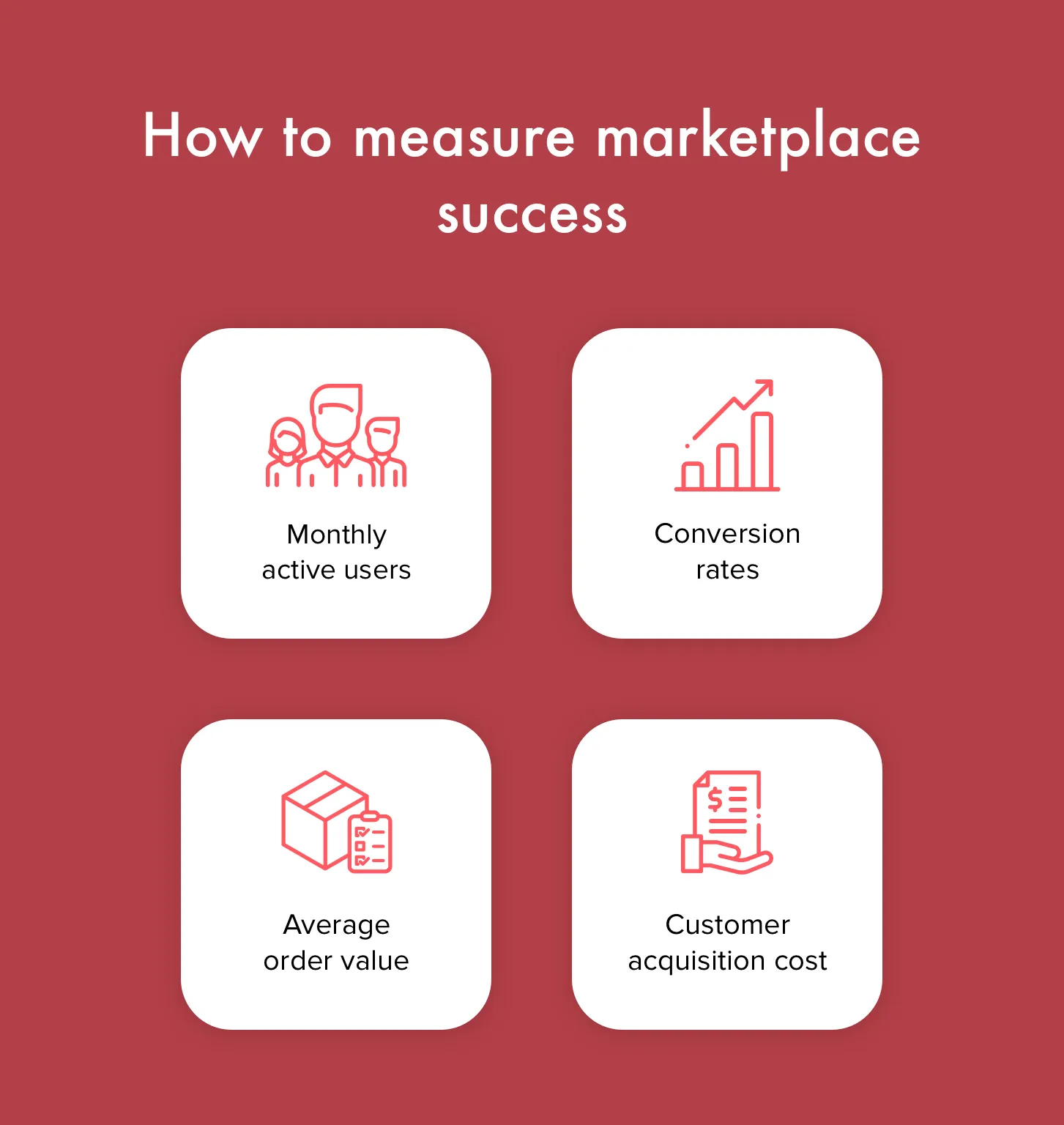
Useful marketplace KPIs
Of course, there are more marketplace KPIs that can be used for tracking your marketplace success. However, they don’t monitor the interaction between the supply and demand sides of the service. To increase marketplace performance, it’s required to measure and improve marketplace liquidity.
What Is the Marketplace Liquidity?
Let’s define marketplace liquidity. According to Simon Rothman, this term stands for the probability of selling something you list or of finding something you are looking for. Merely saying, liquidity can be divided into two parts — buyer and seller liquidity.
Simon Rothman
Partner at Greylock Partners
Liquidity isn’t the most important thing. It’s the only thing.
To understand the term better, let’s discuss buyer and seller liquidity separately.
Buyer liquidity
This term stands for the probability that a user’s visit will turn into a transaction. To measure this metric you need to take the number of visits and transactions for a particular time. It leads to a formula: the number of transactions divided by the number of visits.
Seller liquidity
Seller liquidity means the percentage of listings that lead to transactions during a certain period.
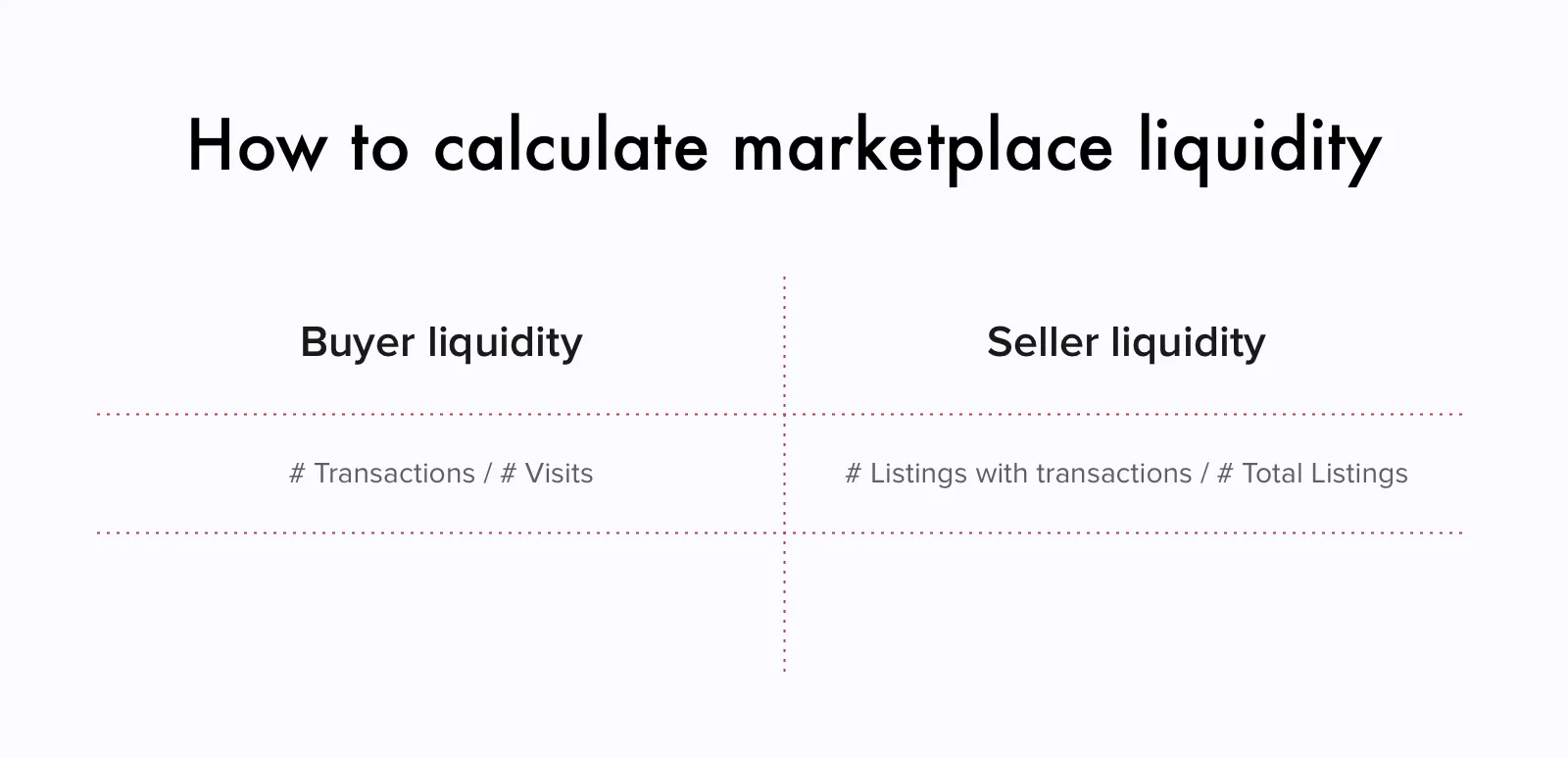
How to calculate buyer and seller liquidity
To get the data on your marketplace liquidity, it’s necessary to calculate both metrics. Additionally, liquidity can be different for various market segments since every field has peculiarities.
For instance, Uber’s buyer liquidity is the number of requests that became a ride for one week. As for sellers’ liquidity, it can be the number of drivers that work full-time.
Successful Stories: How Airbnb and Uber Achieved Liquidity
Airbnb and Uber are giant marketplace enterprises that are expected to generate $1,26 billion and $3,5 billion in revenue in 2019, respectively.
These marketplaces are usually called two-sided since they connect two types of users — sellers and buyers. Uber and Airbnb have gained trust and loyalty of customers achieving high liquidity.
The question arises — how to achieve such a liquidity level?
Airbnb and Uber have been using similar strategies.
Useful content
Users tend to measure the company’s expertise with the content it provides. For instance, Airbnb offers to look through the accommodation details with one click. Additionally, Airbnb provides visitors with professional photos of apartments. People are visual creatures, so they tend to choose beautiful locations.
Good first impression
To achieve success, it’s required to show the value of your service immediately. It’s not enough to tell that the product is good. Buyers and sellers should both clearly understand the benefits they get. For example, Uber offers cooperation for drivers on the homepage.
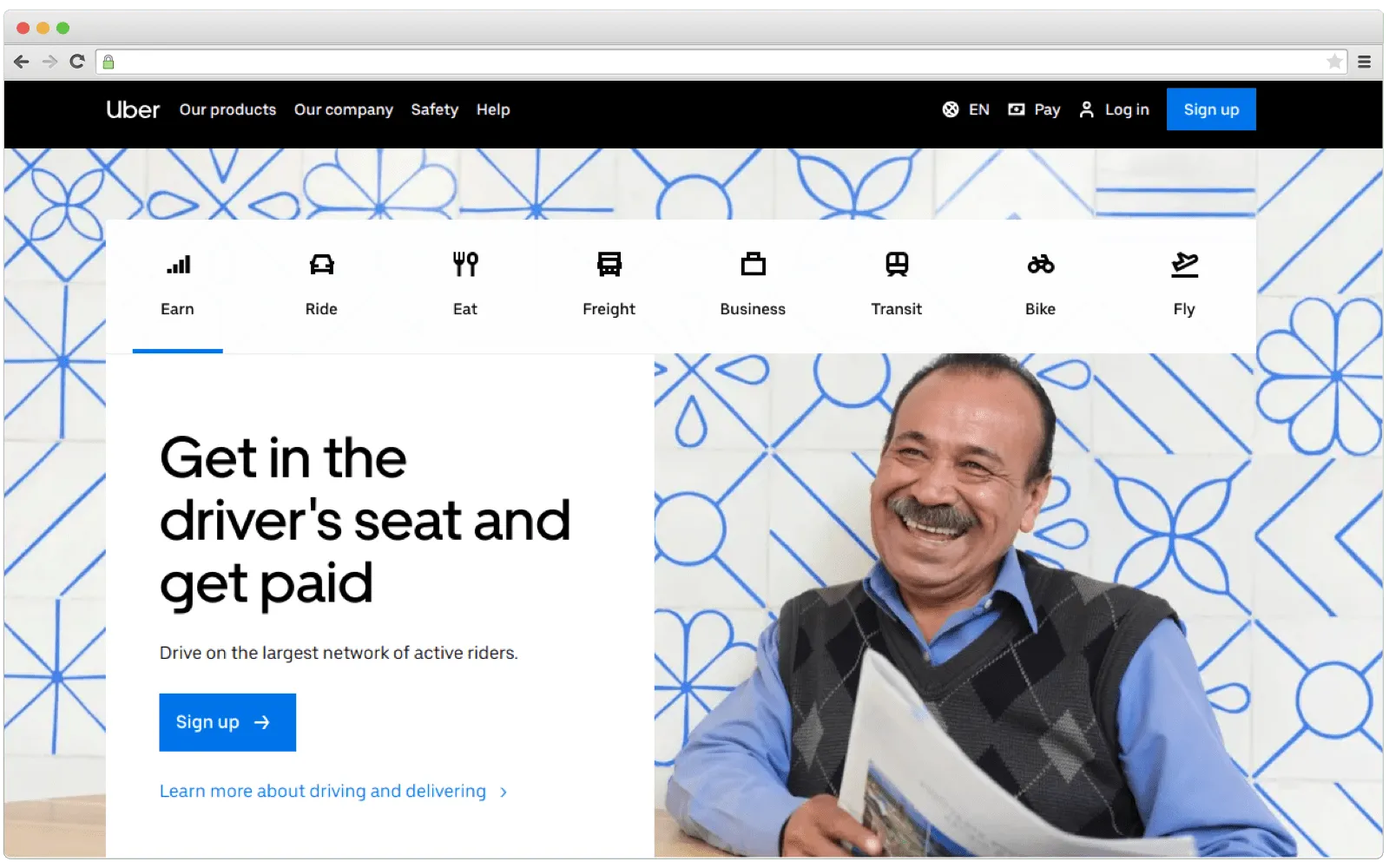
Uber
Social networks
There are a lot of popular social networks, e.g. Instagram, Twitter, Facebook. Users look through the latest news, find discounts and interesting offers via social media. Airbnb’s Instagram account provides photos taken by guests. So, users are sure that it’s a real location. As for Uber, its Instagram account is full of clients’ reviews. Additionally, Uber posts Stories about the company’s rewards and rider safety. All these help them gain trust and loyalty.
Community space
Airbnb has a forum where guests can share their personal experience of staying in an accommodation. Users have an opportunity to send real photos and discuss good or bad sides. Additionally, there is a forum of Airbnb hosts where they can talk about how to become a superhost.
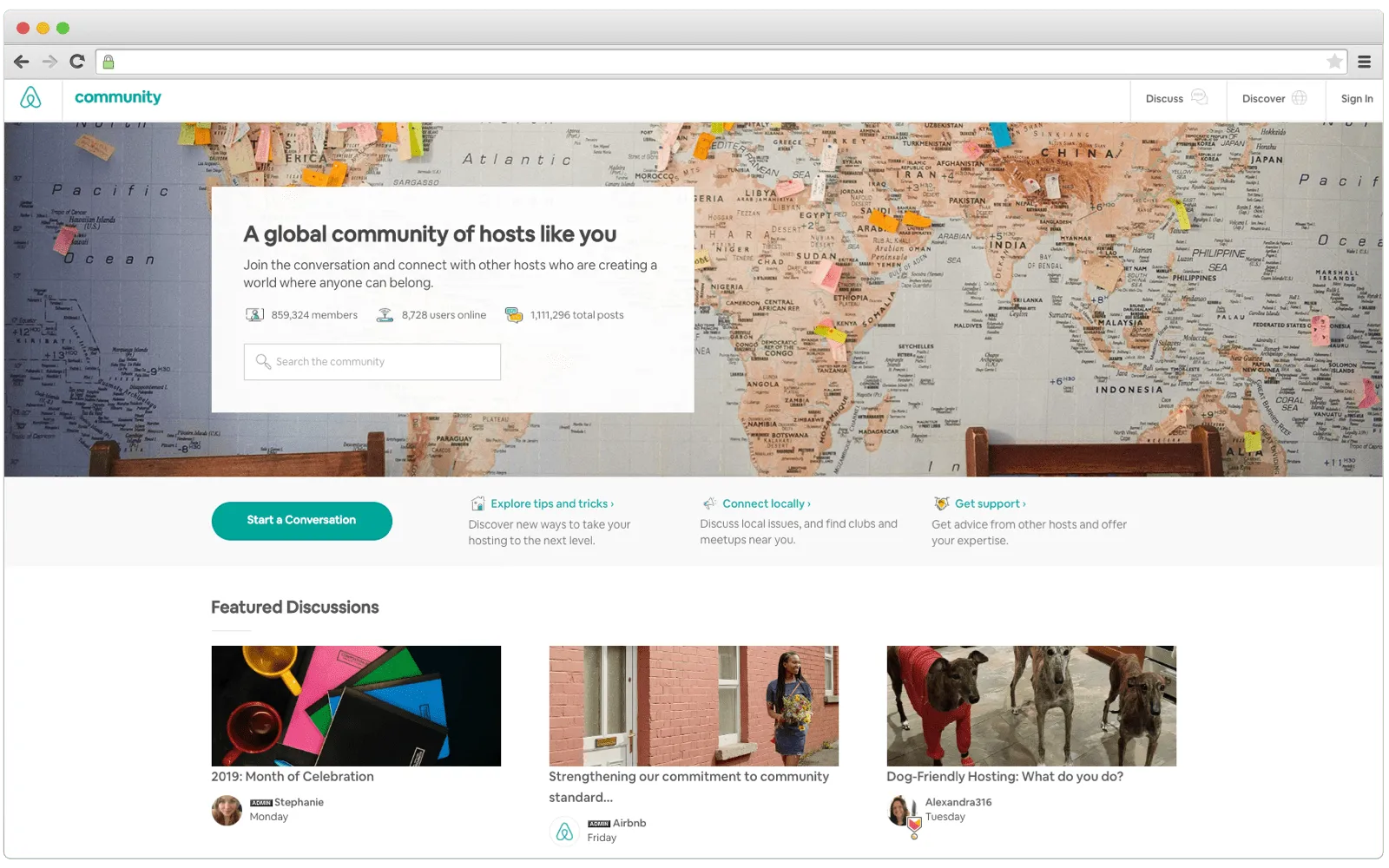
Airbnb: Hosts' chat
How to gain users’ trust and increase marketplace liquidity? It’s required to persuade users that your service is secure and necessary.
Airbnb and Uber haven’t reached the high liquidity level at once. However, there are some features that you can implement in software development service to increase marketplace liquidity.
How to Improve Marketplace Liquidity: Solutions to Integrate
Design
Users pay a lot of attention to the design of application or website. 38% of users leave the platform with unattractive or uncomfortable design. Of course, every marketplace should take care of the user-friendly design. Apart from this, it is worth remembering that the UI/UX design is a significant element of the question "how much does it cost to build a marketplace website".
Additionally, it’s necessary to consider a responsive web design for your website. Mobile devices generate 49% of global website traffic.
Chats
Connecting buyers and sellers is the primary task for a marketplace. So, the winning strategy is creating a convenient communication way. The most wide-spread option is in-app messaging. The logic is simple. The more buyers tell the user about the product, the more users trust sellers. Trust leads to more conversions. This means the marketplace liquidity increases.
Payments
To get more transactions, you need to provide users with various secure and fast payment methods. For marketplaces, these processes are vital since users don’t want to be continuously redirecting to other pages or screens. These days, there are many ready-made payment solutions like Stripe, Braintree, or PayPal. According to the latest stats, 82% of young people shop online. Marketplaces should make the transaction process as comfortable as possible to achieve high liquidity.
Ratings
It’s common to integrate the star-rating system in the app or website. Such a system gives users a way to share their experiences. Visitors can look through the reviews and decide whether or not to buy a product. The rating system is also useful for a marketplace. It’s possible to analyze the data and refuse to sell bad-quality goods.
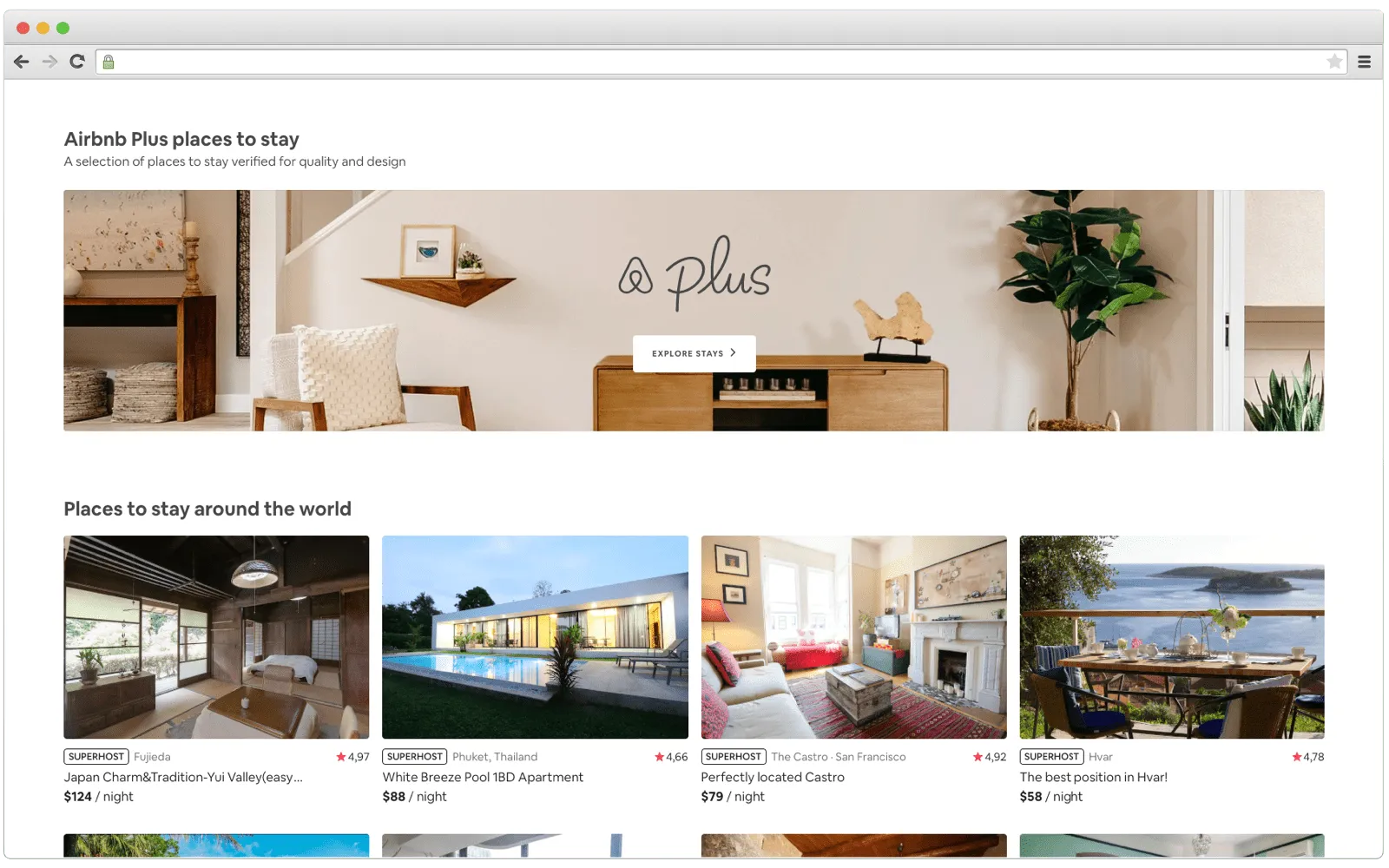
Rating system
Social media
Millennials post everything to their social media accounts. Products they buy, successful payments, and so on. To increase marketplace liquidity and gain their trust, it’s better to provide an opportunity to share buyers’ experience at once. Additionally, it’s a winning marketing solution. Their friends can become your future visitors and clients.
Recommendations
Your marketplace can suggest goods based on previous searches. This feature is AI-based, so it’s quite time-consuming to integrate. But, the recommendation system is perfect for increasing marketplace liquidity and boosting sales.
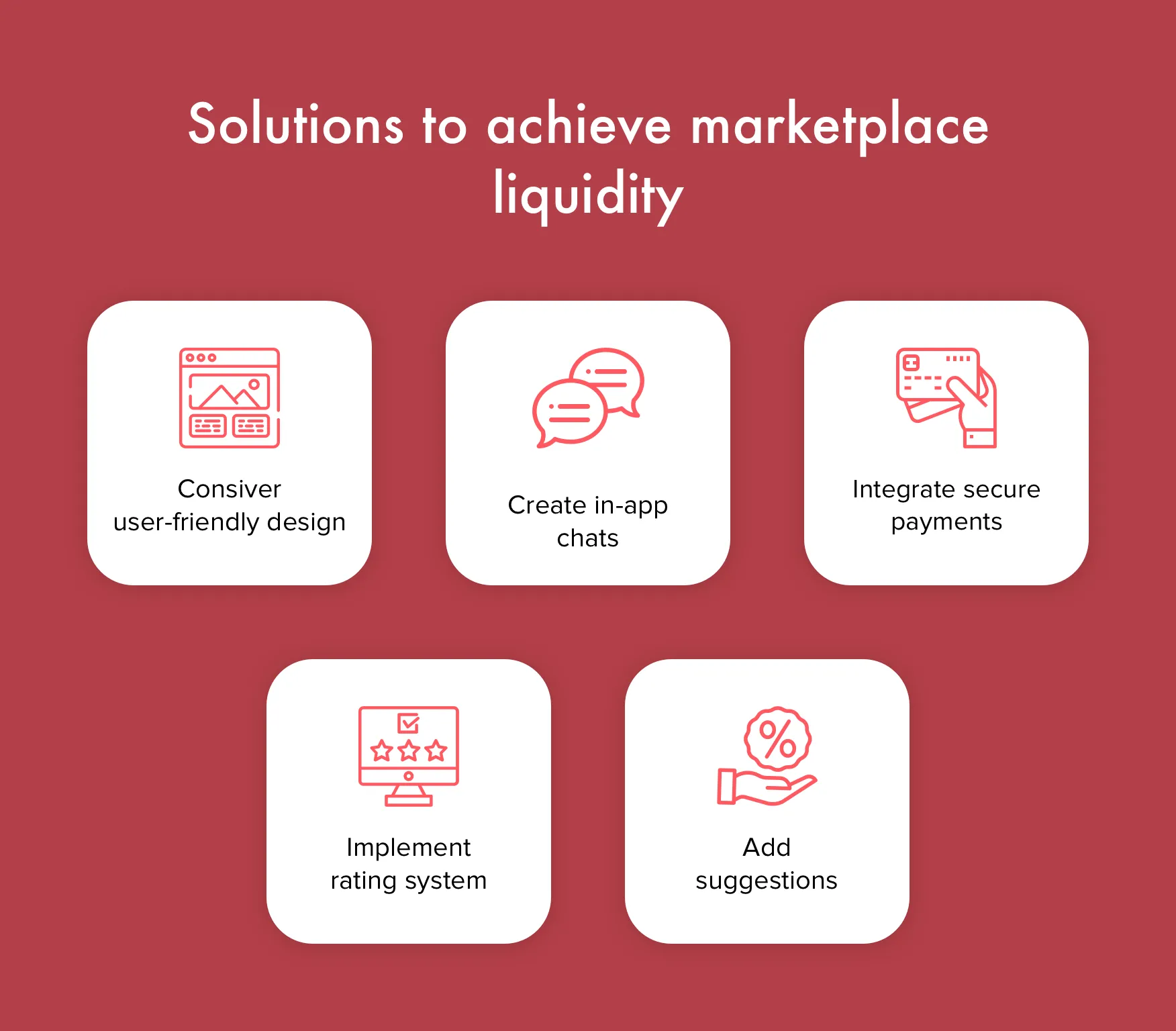
How to improve marketplace liquidity
All the solutions mentioned above can be implemented during product development. They can help you improve marketplace liquidity.
The best thing you can do to increase the level of marketplace liquidity is to gain buyers’ and sellers’ trust. It was trust and loyalty that helped Airbnb and Uber became successful in their industries.
Cleveroad Expertise
We are an outsourcing IT company Cleveroad. Within the cooperation with us, our clients receive excellent tech services as well as turnkey digital products for business process optimization.
Some of our key values:
- Workflow transparency for all engaged parties within the project execution
- Certified team of software engineers with a vast experience in the most sought-after industries
- Non-disclosure agreement signing on request
- Comprehensive Quality Assurance testing prior to the deployment for product performance maximization
Cleveroad certified team will gladly consult you on the most efficient ways for a marketplace liquidity enhancement and renovate the platform in order to grow your profit.
Want to improve your marketplace?
Our software development team has extensive expertise in creating shopping apps.
Formula to calculate the buyer's liquidity: the number of transactions / the number of visits. Seller liquidity: the percentage of listings with transactions / the number of total listings.
Here are the most useful marketplace KPIs:
- Monthly active users or MAU
- Conversion rates
- Average order value
- Customer acquisition cost
Here are a few ideas to improve marketplace liquidity:
- take care of the user-friendly design, adapt it to mobile devices
- create a convenient communication way via in-app messaging
- provide users with various secure and fast payment methods
- integrate a star-rating system
According to Simon Rothman, it's the probability of selling something you list or finding something you are looking for.
Liquidity can be divided into two parts—buyer and seller liquidity:
- Buyer liquidity is the probability that a user's visit will turn into a transaction
- Seller liquidity is the percentage of listings that lead to transactions during a specific period.

Evgeniy Altynpara is a CTO and member of the Forbes Councils’ community of tech professionals. He is an expert in software development and technological entrepreneurship and has 10+years of experience in digital transformation consulting in Healthcare, FinTech, Supply Chain and Logistics
Give us your impressions about this article
Give us your impressions about this article
